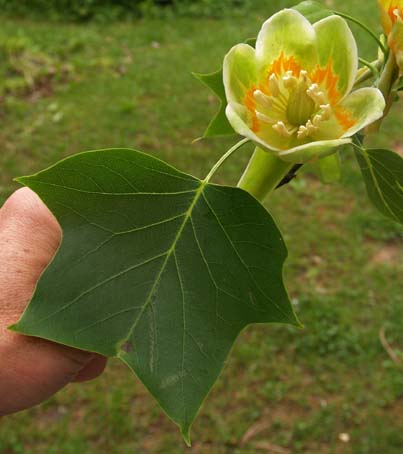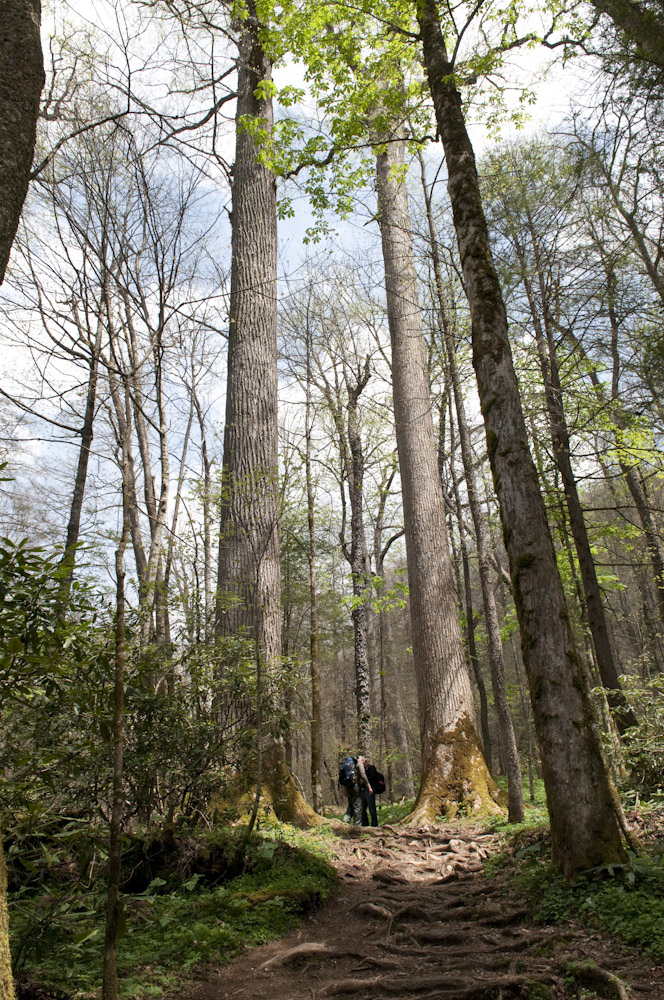(This article was originally written in February 2014 by NCLT board member Penelope Ross, for inclusion in the New Canaan Advertiser)
When you go for a winter walk in New Canaan’s mostly deciduous woodlands, you can add to your enjoyment by identifying the trees you pass on the trail, even though they dropped their leaves months ago.
We can all pick out a maple tree in the summer—the maple leaf is a shape that most everyone knows. But in winter there are cues to a tree’s identity that are equally telling. A shagbark hickory has—you guessed it—shaggy bark. The American hornbeam is also called ironwood or musclewood for its smooth fluted bark.
Another tree that is easy to pick out in the bare wintertime forest is the yellow poplar—Liriodendron tulipifera—also called the “tulip tree” for its tulip-shaped leaves and flowers. So how do you know it’s a tulip poplar without any foliage to go by? Just look around the woods and pick out the tallest, straightest trees. These are sure to be tulip trees.

The tulip poplar’s (liriodendron tuliperifera) distinct leaf and "tulip" flower.
In New Canaan’s 47-acre Watson-Symington Sanctuary, the oldest tulips reach up 100 feet or more to the sky. Actually, they are growing against gravity, in a habit of growth known as geotropism. In so doing, they achieve the goal of all upper story woodland trees, with their crown of branches and foliage at the top of the leafy canopy where the most sunlight is available for photosynthesis. And because other trees grow heliotropically, dodging and bending as they mature from saplings in response to light, the tulip stands proud and tall among its competitors. The tulips are like supporting pillars for the very forest itself.
In colonial times, the tulip poplar was so favored for making ships’ masts that the British King’s agent would mark those reserved for the royal navy with the King’s
Broad Arrow—made with three strikes of an ax. Penalties for cutting down a tree so
marked were severe.
Thomas Jefferson described the tulip poplar as "The Juno of our Groves" when he sent seeds to a Parisian friend, Madame de Tesse, in 1805. Jefferson justly admired this majestic and graceful tree for its dramatic, golden yellow autumn color, its ornamental leaves, and greenish-yellow/orange flowers. Walt Whitman, father of free verse, also found much in the species to wax poetic about: "Then the tulip tree near by—the Apollo of the woods—tall and graceful, yet robust and sinewy, inimitable in hang of foliage and throwing-out of limb; as if the beauteous, vital, leafy creature could walk, if it only would."
The Watson-Symington Sanctuary is open to the public for winter walks, with a post-and-rail entrance on Wellesley Drive.

Twin tulip poplars stand straight and tall along a trail, just like those you’ll see at the Watson-Symington property in New Canaan. The tulip tree is King of the Forest
Recent Comments